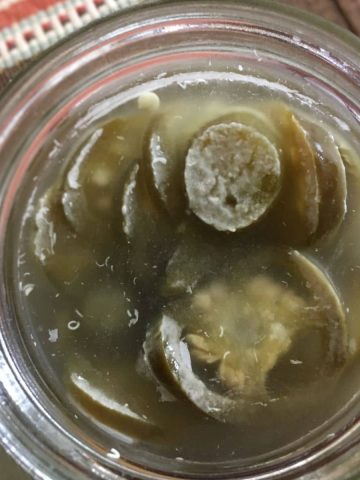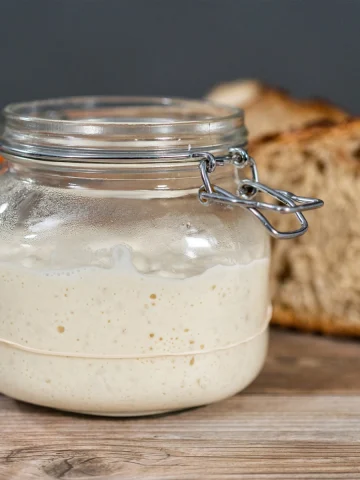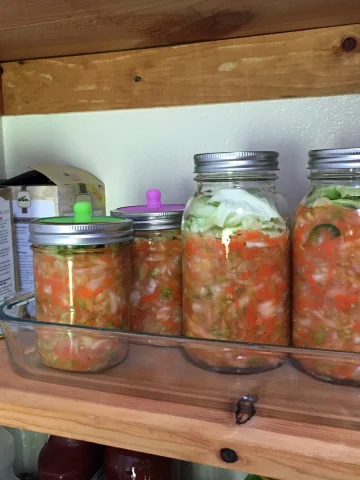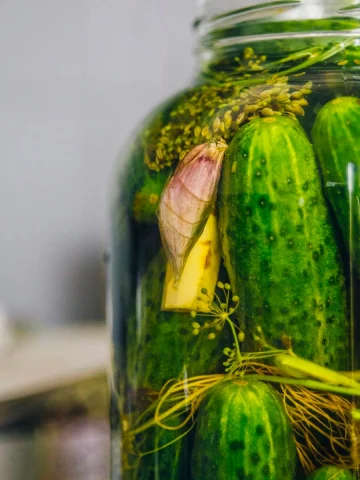All Your Mead Making Questions Answered
What exactly is mead?
Mead is an alcoholic beverage that is created by fermenting honey with yeast and water. Many consider mead one of the world's oldest fermented beverages!
What is the alcohol content in homemade mead?
Much like craft beer, mead can have a wide range of alcohol content based on how the mead is crafted. Most commonly, mead will range from 3.5% - 18% ABV. To get technical, mead strength is classified using the following categories:
- Hydromel - 3.5% - 7.5%
- Standard - 7.5% - 14%
- Sack - 14% - 18%
Does mead taste sweet, like raw honey?
This will really depend on how the mead is crafted and how much residual sugar is left behind in the mead by the yeast. Mead can range anywhere from dry, semi-sweet, or sweet.
What kind of honey can be used to create mead?
All types of honey are suitable to create mead! Each honey can provide different flavors and colors based on the flower that the nectar comes from.
What types of mead are there?
There are many types of mead that can be made at home. Designated styles of mead are pretty well defined based on their strength, sweetness, and whether the mead includes any other additions (fruits, etc.). Some of the more common ones include:
- Traditional Mead - Meads that use only honey as the fermentable sugar.
- Cyser - Mead is made with honey and apples (usually in the form of cider).
- Pyment - Mead is made with honey and grapes (usually in the form of juice). Much like wine, Pyment can be red, white, or blush.
- Berry Mead - Mead is made with honey and berries. This includes strawberries, raspberries, blueberries, blackberries, currants (regardless of color), boysenberries, elderberries, marionberries, mulberries, lingonberries, huckleberries, cranberries, etc. Basically, any fruit with the word "berry" in the name.
- Stone Fruit Mead - Meads made with honey and stone fruit. This would include stone fruits such as cherries, plums, peaches, apricots, and mangoes.
- Melomel - Mead uses honey as well as fruits that are not berries or stone fruit.
- Braggot - Mead is made with honey and malt.
- Bochet - Mead is made with caramelized honey. In most cases, the caramelized honey is blended in with a mead that is already in progress or finished.
- Metheglin - Mead is made with honey and spices or herbs.
Is mead gluten-free?
While natural honey itself is gluten-free, whether mead is gluten-free will really depend on how the mead is made. So long as the mead is made with wine yeast and not brewers yeast, it will remain gluten-free.
If you are allergic to gluten, you will also want to stay away from braggot, which is a mead that also contains malt. Also, you may want to avoid any mead that has been barrel-aged. This is because, more often than not, barrels have previously held other spirits which are not gluten-free, and the mead may take on some of those characteristics.
Is mead vegan friendly?
This is a question that is in contention as it really comes down to your beliefs as a vegan. Technically speaking, bees make honey. Therefore it is an animal product and not vegan friendly. Additionally, some meaderies will also use "finings" in order to bring additional clarity to the end product. These findings in some cases (such as isinglass or gelatin) are made from animal products and would not be considered vegan friendly.
Related Topic: How to Choose the Right Yeast for Making Mead
Is it really legal to create mead at home?
So long as you craft mead for personal consumption (not for sale etc.), it is perfectly legal in the United States to create mead at home. That being said, you will want to check with your local laws and regulations to determine if there are any restrictions. Things like how much is allowed to be made per person, how strong it can be and what containers it is allowed to be stored in can vary from place to place.
How long does mead take to ferment?
Ultimately, this will depend on what type of mead you are trying to make. As an example, say you are aiming for a standard, semi-sweet, traditional mead. The entire process for this type of mead can be completed in around three weeks. That being said, some meads benefit from what is known as a "conditioning" period. Depending on the mead, this conditioning period could last up to 6 months. Read more about how long does mead take to ferment?
How long does homemade mead last?
Mead can last for up to two years if stored away from sunlight.
How should I serve my homemade mead?
Similar to wine, serving your mead at the correct temperature with the correct glassware can enhance the overall experience.
Meads that use dark fruits should be treated similarly to red wine. You'll want to serve the mead at room temperature or slightly chilled using a glass that allows the mead's aroma to be unrestricted.
Meads that are lighter in nature or sweeter should be served in a chilled white wine glass. This way, it will help preserve some of the more delicate and lighter fragrances present in the mead.
How do you make mead at home?
The exact process is a little too much to go into here and is something that we will cover in more detail in a different post. However, we can say at a high level, to make mead at home, you will need to mix some honey and water together in a vessel called a "fermenter." Once mixed, yeast and yeast nutrients will be added to the honey, which will start the fermentation process. During fermentation, the sugars in the honey are converted to alcohol. Once fermentation is complete, the mead can be bottled and enjoyed!
How much honey does it take to make mead?
We hate to sound like a broken record, but this will really depend on the recipe. Things like how sweet you want the finished product to be, how much alcohol content, as well as the total volume of mead you are trying to make, will all change the amount of honey that will be needed. To give you a rough idea, to create a 7.5% standard, semi-sweet mead, you would need around 1.5 pounds of honey for every gallon of mead you want to create.
RELATED FERMENTATION GUIDES
This article highlights frequently asked questions about making mead. Now that you’ve learned all about making mead, here are a few things that you might find interesting…





